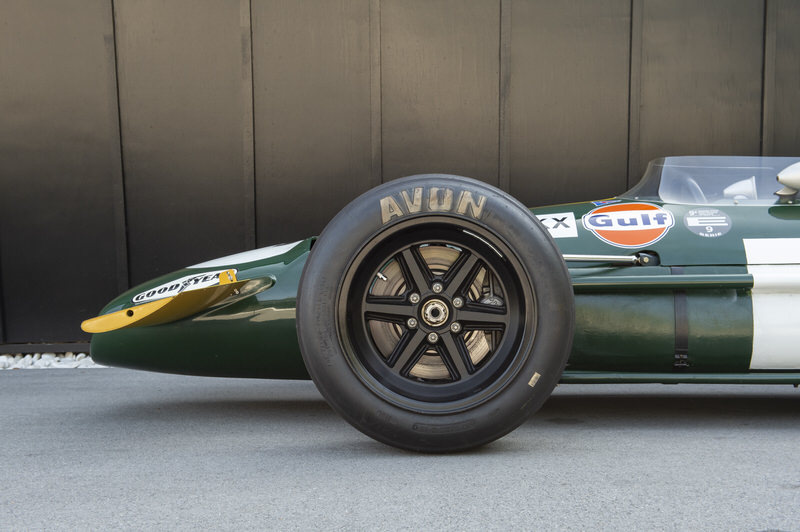The fourth Brabham BT26 was built in July 1969 to replace BT26/2 which had been wrecked in a testing accident at Silverstone. Jack Brabham had been injured in the accident and the new BT26 was ready before he was.

Teammate Jacky Ickx therefore had two BT26s at the 1969 British GP at Silverstone, his regular BT26/3 and the new BT26/4. However, the first person to drive the car that weekend was none other than World Champion Graham Hill, whose Lotus 49B had been delayed on its way to the circuit. Ickx was initially nonplussed to find Hill making numerous changes to his spare car, but when official practice started he found that he preferred it to his regular car and set fourth fastest time. He was delayed at the start of the race but climbed through the field to third by mid-distance and inherited second place a few laps from the chequered flag.

BRABHAM BT26: 1969 – CHASSIS BT26/4
Jack Brabham was still on crutches two weeks later so Ickx again had a choice of cars for the German GP at the Nürburgring. The Belgian knew the circuit well from sports car racing and took his BT26 round in a stunning 7m 44.2s in Friday afternoon’s practice session, six seconds faster than anyone else. He improved to 7m 42.1s the next day to clinch pole position from Jackie Stewart’s Matra MS80. Ickx fluffed his start and the Matra led for the first six laps of the race while ickx forced the Brabham back up to second, breaking the lap record three times before swooping past Stewart as they braked for South Curve. Ickx quickly established a comfortable lead and then eased off, winning by over a minute. It was the Belgian driver’s second GP win.

Jack Brabham was fit again for the next Grand Prix and took over BT26/4. He retired after just a few laps at Monza (where the team’s financial constraints were such that Brabham had to borrow an engine from another team when Ickx’s failed in BT26/3 during practice) but the Brabhams were on fine form at Mosport Park for the Canadian GP with Ickx taking the lead on lap 35 and Brabham passing Jochen Rindt for second place on lap 60 as the team finished 1-2.
At Watkins Glen, Jack lost a certain third place when he had to stop for fuel ten laps short but he still finished forth. In Mexico, Jack put BT26/4 on pole position with Ickx alongside him on the front row but Denny Hulme got past them both to win in the McLaren M7A from Ickx in second and Jack in third place.

Tom Wheatcroft bought the car at the end of 1969 and it was fitted with a 2.5-litre Cosworth DFW engine, the Tasman Formula conversion of Cosworth’s dominant F1 engine. Derek Bell was hired to drive and there was much interest in how a destroked formula 1 car could compete against the new Formula 5000 cars. The tricky Levin circuit was expected to suit the nimbler Brabham but Bell was a lacklustre sixth in qualifying, improving to run second in the race before being knocked off by one of the F5000s. The New Zealand GP saw an improvement with Bell finishing second and he ran second again at Wigram before the engine blew. Wheatcroft had a new engine flown in from England but also hired Chris Amon to sort out the handling of the car at Teretonga. The local hero took the car out in practice but forgot to turn on the catch tank pump switch and within a few laps the expensive new Cosworth had a rod poking out the side.
With the Brabham converted back to F1 spec, Wheatcroft and Bell continued their partnership into the 1970 Grand Prix season, but after a couple of disappointing outings the car was retired to Wheatcroft’s Donington Museum.
























